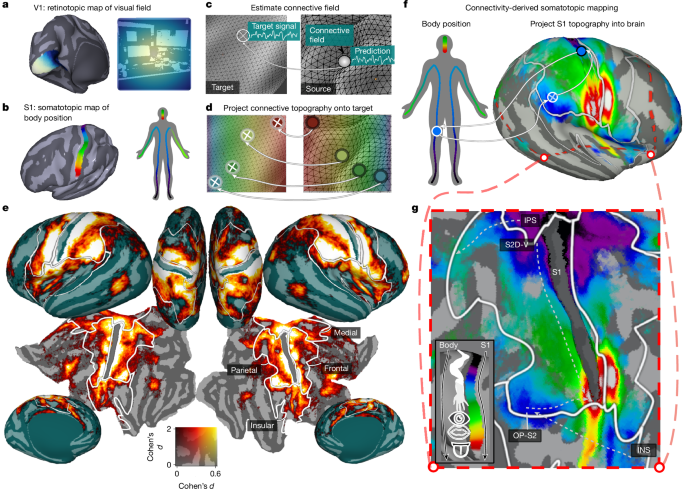
"fMRI data were taken from 174 participants of the HCP movie-watching dataset. The sample consisted of 104 female and 70 male individuals (mean age 29.3 years, s.d. = 3.3) born in Missouri, USA. In total, 88.5% of the sample identified as 'white' (4.0% Asian, Hawaiian or Other Pacific Island; 6.3% Black or African American; 1.1% unreported). The English language comprehension ability of the sample (as assessed by age-adjusted NIH Picture Vocabulary Test scores) was above the national average of 100 (mean = 110, s.d. = 15)."
"The participants were scanned while watching short (ranging from 1 to 4.3 min in length) independent and Hollywood film clips that were concatenated into four videos of 11.9-13.7 min total length. Before each clip, and after the final clip was displayed, there were 20 s periods in which there was no auditory stimulation and only the word 'REST' presented on the screen. There were four separate functional runs, in which observers viewed each of the four separate videos."
One hundred seventy-four participants (104 female, 70 male; mean age 29.3 years) from Missouri participated in 7T fMRI movie-watching sessions. The sample was 88.5% white and showed above-average English comprehension (NIH Picture Vocabulary Test mean = 110). Participants viewed short independent and Hollywood film clips concatenated into four videos (11.9–13.7 min each) with 20 s REST periods before each clip and after the final clip. Each video included an identical 83 s validation sequence later removed for cross-validation independence. Audio was scaled and delivered via Sensimetric earbuds. Participants also completed one hour of resting-state scans split into four runs. Procedures received Washington University IRB approval and adhered to HCP data use terms.
Read at Nature
Unable to calculate read time
Collection
[
|
...
]